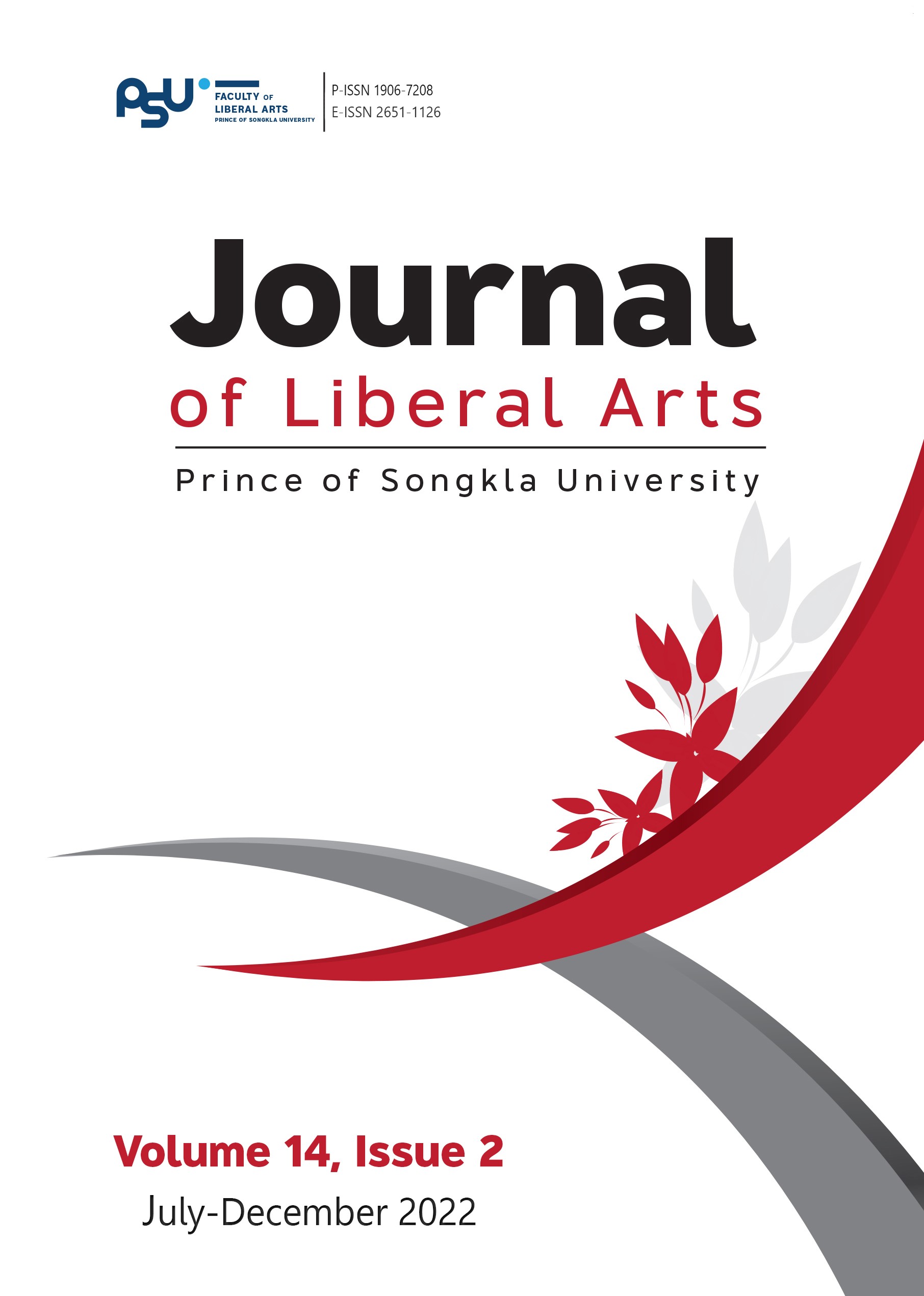The Perspectives of Cambodian Government Officials on Gender Inequality in the Workplace
DOI:
https://doi.org/10.14456/jlapsu.2022.25Keywords:
traditional gender roles, gender equality, Cambodian women, workplace inequality, government sectorAbstract
Gender-oriented norms and normative social mindsets continue to divide employment by sex, limiting the growth of women's responsibilities in modern society. The constancy of discriminatory stereotypes about the roles and responsibilities of women and men in family and society is deeply rooted in Cambodian culture. It is continuously maintained by prioritizing men’s superiority over women. This qualitative research aimed to investigate the viewpoints of male and female Cambodian government officials regarding gender (in)equality in the workplace and discover the appropriate remedies to address any related existing issues. Data were collected through in-depth interviews and non-participant observation. The key informants were six female and six male government officials in Battambang Province, Cambodia. The findings indicated the meaning of gender equality in the workplace as women and men having equal opportunities, rights, and responsibilities. Therefore, males and females should be given equal chances for employment or job placement based on their abilities. In addition, education, mindset, understanding and acceptance of gender in the workplace, opportunity and participation in making decisions, and social support were identified as the important factors contributing to the recognition of gender equality. It was also revealed that inequality did exist in local Cambodian government institutions. The stereotypes and adherence to more traditional gender roles were the main factors negatively impacting gender equality. The data pointed to the need for both men and women to develop a deeper understanding of workplace gender equality and for the Cambodian government to take steps to ensure that both female and male officials comply with gender equality policies already in place.
References
Alexander, A. C., & Welzel, C. (2007). Empowering women: four theories tested on four different aspects of gender equality. In the annual meeting of the Midwest Political Science Association. Palmer House Hotel.
Asian Development Bank (ADB). (2013). Gender equality in the labor market in Cambodia. Retrieved from https://www.adb.org/sites/default/files/publication/31193/gender-equality-labor-market-cambodia.pdf.
Conceicao, P. (2020). Sticky floors, glass ceilings, and biased barriers: the architecture of gender inequality. Human Development Reports-UNDP.
Intaprom, W. (2019). Analysis and presentation of qualitative data analysis. Academic Journal of Phanakhon Rajabhat University, 10(2), 314-333.
Karam, A. (2013). Education as the pathway towards gender equality. United Nations.
Khun, K. (2006). Gender issue in Cambodia. Asia Culture Forum: Session 11. Contesting within/out Gender and Sexuality. Asian Youth Culture Camp, Sejong-si, Korea. Retrieved from http://cct.pa.go.kr/data/acf2006/aycc/aycc_1105_Keasa%20Khun.pdf.
Ministry of Women’s Affairs (MoWA). (2020). Neary Rattanak V 2019-2023 Final-Five Year Strategic Plan for Strengthening Gender Mainstreaming and Women’s Empowerment. Retrieved from https://www.mowa.gov.kh/wp-content/uploads/2021/02/Neary-Rattanak-V-final-Eng.pdf.
National Institute of Statistics (NIS). (2013). Cambodia inter-censal population survey 2013 final report. Ministry of Planning Phnom Penh.
National Institute of Statistics (NIS). (2018). Women and men in Cambodia. Ministry of Planning Phnom Penh.
Oxfam. (1995). OXFAM’s conceptual framework on women’s economic empowerment. Oxfam.
Rahim, N.A., Mohamed, Z.B., Amrin, A. & Mohammad, R. (2019). Women's dual roles and career growth: A preliminary study of Malaysian female talents in science, engineering, and technology (SET). Journal of Physics: Conference Series, 1174(1), 1-11.
Reeves, H., & Baden, S. (2000). Gender and development: Concepts and definitions. Institute of Development Studies.
Tasli, K. (2007). A conceptual framework for gender and development studies: From welfare to empowerment. Sudwind-Verlag.
The ASEAN Secretariat. (2016). ASEAN socio-cultural community blueprint 2025. Association of Southeast Asian Nations (ASEAN) 2016. Retrieved from https://www.asean.org/wp-content/uploads/2012/05/8.-March-2016-ASCC-Blueprint-2025.pdf.
The Royal Government of Cambodia (RGC). (2019). National strategic development 2019- 2023. RGC. Retrieved from http://cdc-crdb.gov.kh/en/strategy/documents/nsdp-2019-2023_en.pdf.
United Nations Children’s Fund (UNICEF). (2011). Convention on the elimination of all forms of discrimination against women
in brief. Retrieved from https://www.unicef.org/lac/media/28441/file/CEDAW-in-brief-for-adolescents.pdf.
United States Agency for International Development (USAID). (2014). Women’s leadership as a route to greater empowerment Cambodia case study. Retrieved from https://pdf.usaid.gov/pdf_docs/PA00K892.pdf.
UN Women. (2014). Gender equality and sustainable development. United Nations.World Bank. (2012). The world bank annual report 2012 (volume 1, main report). Retrieved from https://openknowledge.worldbank.org/handle/10986/11844.
World Bank. (2013). World development report 2014: risk and opportunity-managing risk for development. Retrieved from https://openknowledge. worldbank.org/handle/10986/16092.
World Economics Forum (WEF). (2018). The global gender gap report 2018 Retrieved from https://www3.weforum.
org/docs/WEF_GGGR_2018.pdf.
Yeager, D.S., & Dweck, C.S. (2012). Mindsets that promote resilience: When students believe that personal characteristics can be developed. Educational Psychologist, 47(4), 302-314.
Downloads
Published
How to Cite
Issue
Section
License
Copyright (c) 2022 Visalsokwatey Sin

This work is licensed under a Creative Commons Attribution-NonCommercial-NoDerivatives 4.0 International License.
The authors retain the copyright to their article but the Journal of Liberal Arts, Prince of Songkla University reserves the exclusive rights to first publication.






